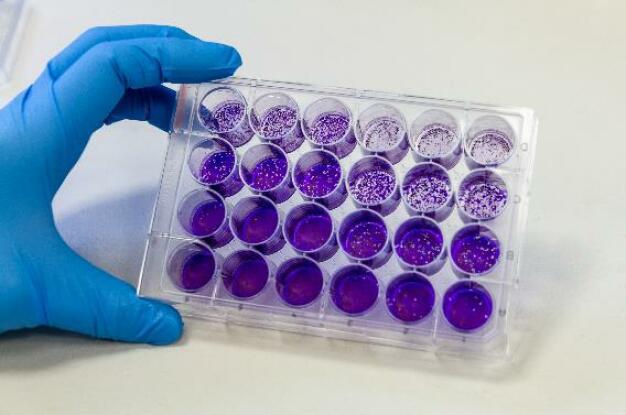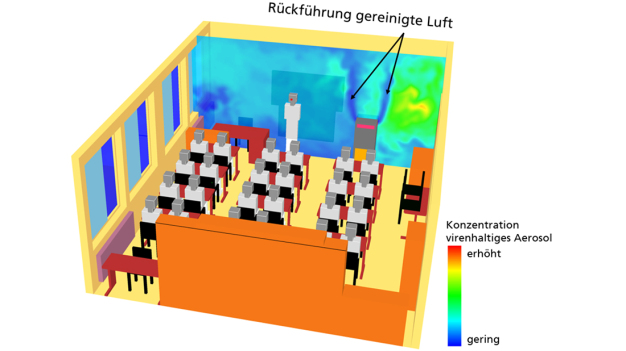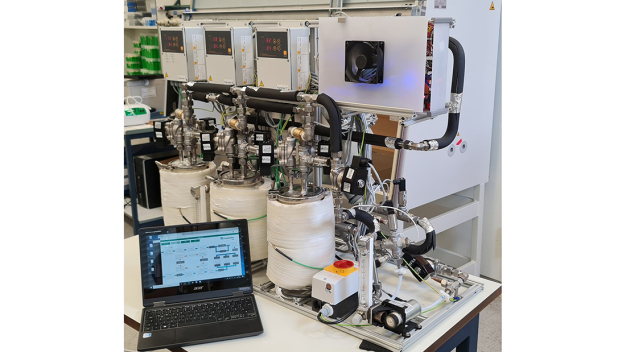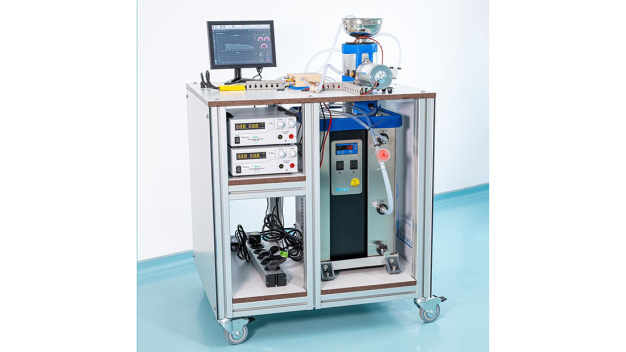- Air
Indoor Air: How to Eliminate Viruses Effectively
The AVATOR project investigates and optimizes various filter and air purification techniques
How can viruses be effectively eliminated from indoor air? This question is still important. Efficient indoor air purification is essential, especially in schools. Fraunhofer researchers are investigating and optimizing various filter and air purification techniques in the AVATOR project.
In all German federal states school is in full swing - with full class sizes. Children and young people are sitting close together in classrooms, many of them unvaccinated due to their young age. In an effort to minimize the risk of infection, state governments and ministries of education are promoting the procurement of indoor air purifiers. But what can the various techniques for indoor air purification actually achieve? Led by the Fraunhofer Institute for Building Physics IBP, researchers from a total of 15 Fraunhofer institutes and institutions are studying this in the AVATOR project, short for "Anti-Virus Aerosol: Testing, Operation, Reduction”. They are also investigating and optimizing new air purification techniques that are not yet available on the market.
Classic indoor air filters
The most common method to purify indoor air is carried out by means of classic indoor air filters. They draw the air through a filter fleece, thus retaining the viruses and releasing the purified air back into the room. Simulations by Fraunhofer EMI demonstrate how such devices can be used effectively, using a classroom as an example: with a properly adjusted air exchange rate and suitable positioning, the aerosol concentration can be reduced by about half after 10-15 minutes of operation. The simulations also show that the aerosol concentration depends on the specific ambient conditions and that the concentration is not the same for all positions in the classroom. For an even better way to purify the indoor air from the aerosols expelled when breathing, especially from their viral load, the researchers from Fraunhofer LBF and IAP have equipped the synthetics used for fleece production with additives. "The filtering effect of the fleeces is based on three different mechanisms," explains Prof. Dr. Gunnar Grün, deputy director of Fraunhofer IBP and head of the AVATOR project. "Large particles cannot pass through the fleece and are filtered out. Smaller particles are slowed down and get trapped in the fleece material due to inertia. The polar additives affect filter performance with regard to the smallest particles that adhere to the filter material due to surface effects. "These surface effects are precisely what the scientists are changing by using additives to filter out the smallest particles more efficiently. The overall filter performance is determined by the particle size that is separated the least. Since these are usually very small particles (around 200 - 300 µm), the filter efficiency can be further increased by this coating. Although there are already approaches for improving filter performance with additives, the filter fleeces optimized this way are designed for the typical oil-based test aerosols. However, the aerosols that people release into the air when breathing are water-based and therefore behave differently. "We were able to increase the efficiency especially for these bio-aerosols," says Grün. The researchers at Fraunhofer IMM are generating suitable water-based test aerosols by using liposomes. They also have been developing a device for the optical detection of virus particles in indoor air.
Air purification with plasma
Even though indoor-air filters work well in classrooms and similar places, they reach their limits, especially with regard to retrofitting, in environments such as cold and damp refrigerating rooms or slaughterhouses, for example. In order to avoid additional air resistance in the system, air purification systems based on low-temperature plasma, which eliminate viruses from the air, are a good solution. In these air purification systems, the viruses do not remain attached to filter fleeces, but are deactivated in the plasma device and separated on electrodes. Here, too, the Fraunhofer researchers were able to achieve improvements in the AVATOR project. "Our colleagues at Fraunhofer IPM have developed self-cleaning electrodes based on the technology of an industrial partner from the automotive sector. Thus, the usual cleaning process is no longer necessary," Grün explains.
"Virus grill": overtemperature sterilization
Indoor air filters and plasma eliminate the viruses from the indoor air. With the "virus grill", the researchers have chosen a completely different approach to prevent infections: By heating the air to over 90 degrees Celsius, the viruses are rendered harmless. Although the viruses remain in the air, they cannot multiply any longer. They are inactivated and cannot affect people anymore. Fraunhofer IFAM in Dresden has already demonstrated that this principle works. The very high heat recovery allows an energy-efficient operation of the air purification system and minimizes the heat supply to the room which is particularly important in classrooms, offices and other non-air-conditioned rooms. Currently, the scientists are further developing the device, with particular focus on miniaturization.
Office partition
In collaboration with a foam manufacturer, Fraunhofer ICT and Fraunhofer IBP have developed an approach that is particularly effective in open-plan offices. They use sound-absorbing partitions to eliminate the viral load from the air and minimize the risk of infection. "The entire surface of the foam is coated with an antimicrobial silver compound. Thus, a high level of virus inactivation can be achieved during airflow," Grün summarizes. A demonstrator already exists. The sound-absorbing function is also taken into account: especially within the range of human speech, i.e. at around 1000 to 4000 hertz, these partitions provide a high sound absorption.
Virucide for room disinfection
When unoccupied rooms are to be cleaned, virucides are employed. However, these hazardous substances usually have to be transported to the site and stored until being used. Researchers at Fraunhofer IMM have therefore developed a more practical alternative: a mobile reactor that produces the virucide peroxydicarbonate from a harmless sodium carbonate solution. The virucide itself decomposes into non-hazardous components. The reactor is already working and the toxicity tests are currently being carried out at Fraunhofer ITEM, investigating the intensity of the virucide's effect on microorganisms and whether there is any critical exposure to humans and the environment resulting from its use.
Validation of the techniques with virus detection
Whether classic room air filters, virus grills or partitions: The indoor air purification techniques have to be thoroughly validated in terms of efficiency. Three Fraunhofer Institutes are involved in this validation: Fraunhofer ITEM, Fraunhofer IBP and Fraunhofer IGB. Non-pathogenic viruses harmless to humans but similar to the SARS-CoV-2 viruses regarding size, enveloping structure and RNA strand are nebulized and serve as test aerosols for the various purification techniques. These so-called surrogate viruses are produced on a scaled basis, purified, and then formulated as test aerosols and nebulized for the various purification techniques. With a view to identifying how effectively the new inactivation methods are, the researchers analyze the infectivity and compare the total number of viruses before and after inactivation.
Fraunhofer-Institut für Bauphysik IBP
70569 Stuttgart
Germany












